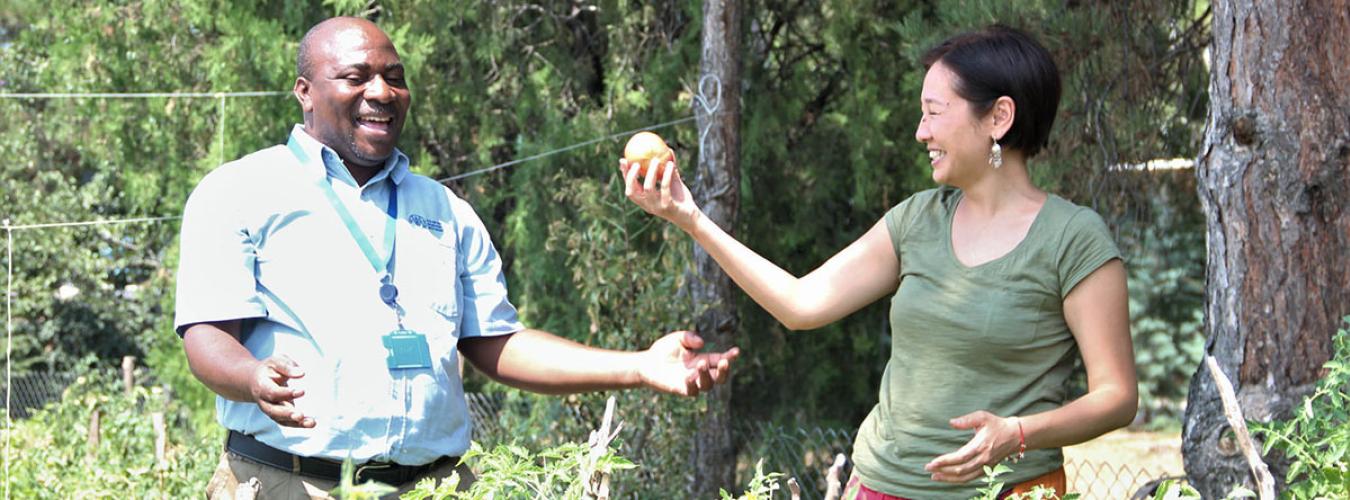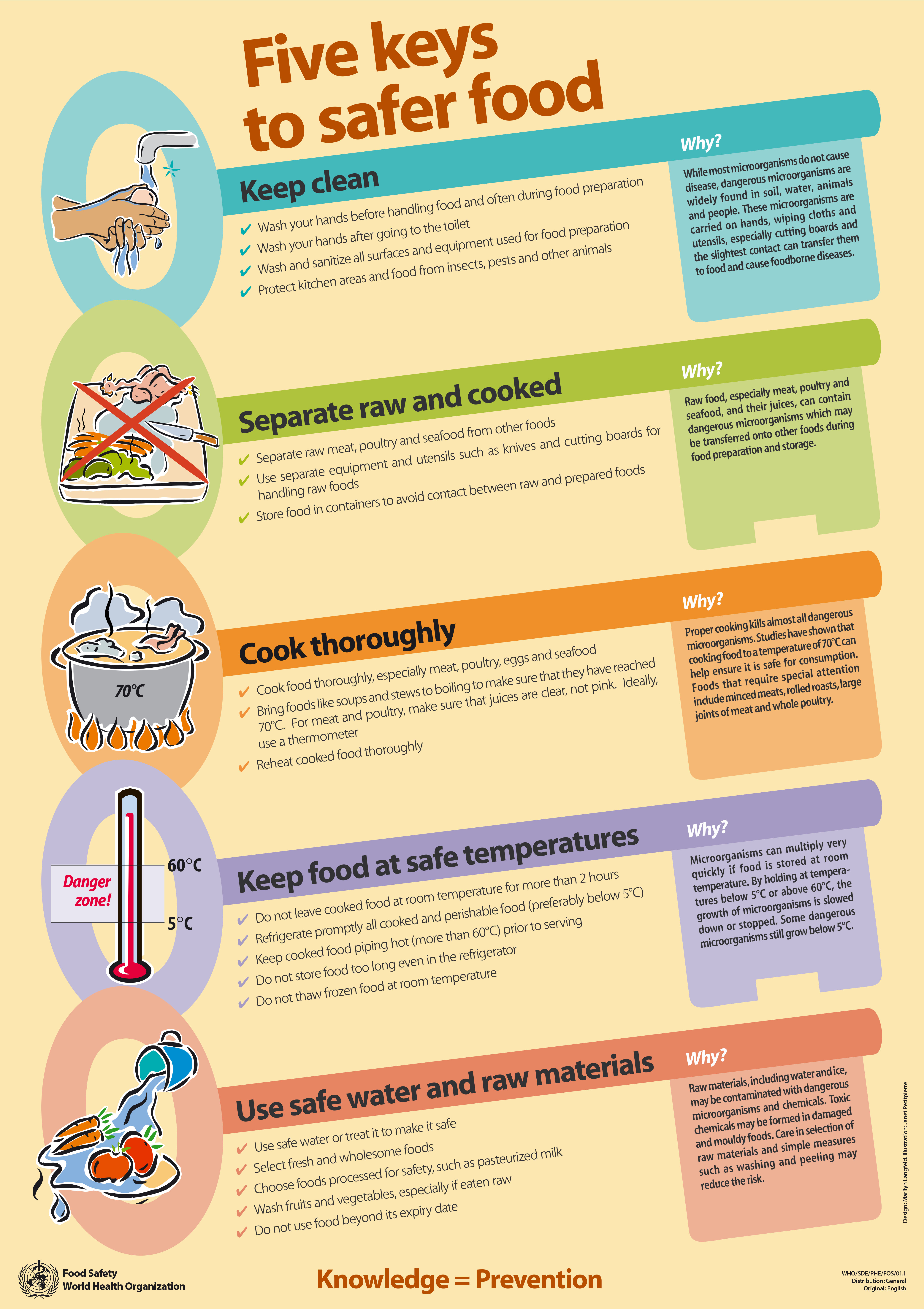
Additional Resources
Key Messages
There is no food security without food safety
If it is not safe, it is not food. Only when food is safe will it meet dietary needs and help ensure that everyone can live an active and healthy life. This is also referred to as the utilization dimension of food security.
Safe food is essential to human health and well-being
The World Health Organization estimates that more than 600 million people fall ill and 420 000 die every year from eating food contaminated with bacteria, viruses, parasites, toxins or chemicals. However, these numbers represent only ‘the tip of the iceberg’ as comprehensive surveillance data for foodborne illnesses is not available everywhere. When food is not safe, humans cannot benefit from its nutritional value and cannot grow and develop.
Investing in food safety today will reap future rewards
Safe food production improves economic opportunities by enabling market access and productivity. At the same time, good practices along the supply chain improve sustainability, minimizing environmental damage and the amount of agricultural product that has to be discarded. Unsafe or contaminated food leads to trade rejections, economic losses and food loss and waste.
The ‘One Health’ approach improves food safety
Food safety requires a holistic approach, such as ‘One Health’, which recognizes the connection between the health of people, animals, plants and the environment. Animal and plant health are critical to agriculture producing enough food to feed the world. Keeping animals healthy will also minimize the risk of zoonotic pathogens (disease-causing organisms that can be transmitted between animals and humans), antimicrobial resistant organisms and more.
Food safety is based on science
Looking at or smelling food is not a reliable way to check if it is safe, but scientists have developed tests and tools to do so. Food scientists, microbiologists, veterinarians, medical doctors and toxicologists, to name a few, advise what food production, processing, handling and preparation practices are needed to make and keep food safe. When food safety practices are employed across the food chain, the result is safe food.
FAO and WHO support efforts worldwide to keep food safe
Through complementary mandates and a longstanding partnership, FAO and WHO cover a range of issues to support global food safety and protect consumer health. FAO addresses food safety issues along the food supply chain while WHO works with the public health sector to lower the burden of foodborne diseases. The two organizations have joint programmes on food standards (Codex Alimentarius), the provision of scientific advice (JECFA, JEMRA, JMPR, JEMNU) and emergency response (INFOSAN).
Codex Alimentarius food standards help protect health and facilitate trade
The FAO/WHO Codex Alimentarius Commission brings together the expertise of both organizations and its 189 Members to establish science-based international standards, guidelines and codes of practice that help ensure food safety and quality in a consensual, inclusive and transparent way. It addresses all food-related issues: contaminants, hygienic practices, labelling, additives, inspection and certification, nutrition and residues of veterinary drugs and pesticides. When governments adopt international standards, farmers and producers are able to meet consumer demands for safe food and expand their market access.
Documents and Publications
- World Food Safety Day — GA Resolution (A/RES/73/250)
- World Food Safety Day — WHA Resolution (WHA/73.5)
- 10 Facts on Food Safety
- Five Keys to Safer Food Manual
- General Principles of Food Hygiene
- The State of Food Security and Nutrition in the World
UN System
FAO
WHO
Other Resources
Links
- International Food Safety Conference
- Codex Alimentarius
- Sustainable Development Goals
- Global issues — Food
- Global issues — Health
- Zero Hunger Challenge
Related Observances
- World Health Day, 7 April
- World Tuna Day, 2 May
- Sustainable Gastronomy Day, 18 June
- World Food Day, 16 October
- World Antimicrobial Awareness Week, November

